Pollinator conservation cannot be approached in isolation. All cities have something to offer. It is essential to establish partnerships and strong networks and to engage all citizens because this collaboration will lead to the success and lasting effect of pollinator initiatives and strategies.
Biodiversity faces increasing challenges with the development of cities. Land-use change, intensive agricultural management and pesticide use, invasive alien species, diseases, climate change, and environmental pollution are threatening bees and other pollinators. Helping them to survive means ensuring food security and maintaining healthy ecosystems.
Nature conservation and the improvement of urban areas are offering a variety of ecosystem services that support the transition to healthier, more adaptable, and resilient cities. We are already acquainted with terms like ecosystem-based adaptation, climate change, green-blue infrastructure, or nature-based solutions, all of which understand essentials for rich biodiversity including pollinator species.
However, in order to boost action throughout cities, it is necessary to re-establish the relationship between people and nature in urban areas in order to raise awareness of the importance of biodiversity, particularly, pollinators. That was the topic discussed at a TNOC Festival Seed Session “Pollinator-friendly cities – what are the cities doing to protect biodiversity?” presented by the Landscape Laboratory (Guimarães, Portugal). The final result was a vivid colour palette full of ideas (see the figure below). Cities such as Northumbria (Great Britain), Melbourne (Australia), Bristol (England), Turin (Italy), Zurich (Switzerland), Newcastle (England), and Guimarães (Portugal) brought the mural to life with proposals and suggestions about how pollinators are being protected in these cities and beyond.
There have been several suggestions, such as: (i) Bed & Breakfasts & Biodiversity (B&Bs) – for birds, bees, and butterflies endangered by urban expansion, where pollinator tunnels or highways are built to connect “B & Bs” or “pollen booths” to rest and recover; (ii) butterfly gardens monitored by citizens in “community spaces” (e.g., mental health clinics, community gardens, family houses, among others); (iii) installation of informative panels explaining why particular places should be protected; (iv) changing the frequency and timing of weed removal to provide refuge and food for pollinators; or (v) leaving bare earth for ground-nesting solitary bees, who prefer to nest in bare, firm, and sloped ground.
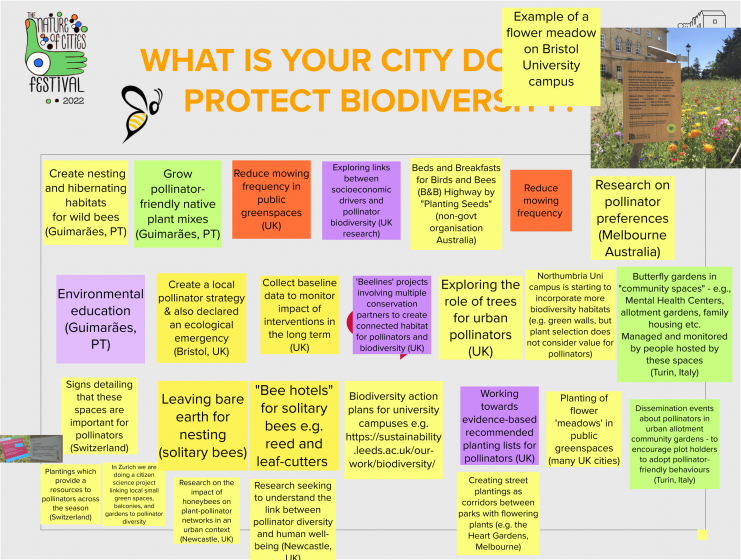
Pollinator conservation cannot be approached in isolation. All cities have something to offer. It is essential to establish partnerships and strong networks and to engage all citizens because this collaboration will lead to the success and lasting effect of pollinator initiatives and strategies.
The message is simple: cities should collaborate, exchange experiences and the best practices, and support one another in order to achieve the common goal: to protect biodiversity, in particular pollinators, and provide a greener and more colourful legacy for future generations.
about the writer
Guilherme Sequeira Braga
Guilherme Sequeira Braga is an Environmental Education Technician at the Landscape Laboratory of Guimarães. Degree in Biology and Master in Ecology, Environment and Territory from the Faculty of Sciences of the University of Porto.
Ana Pinheira and Guilherme Sequeira Braga
Guimarães


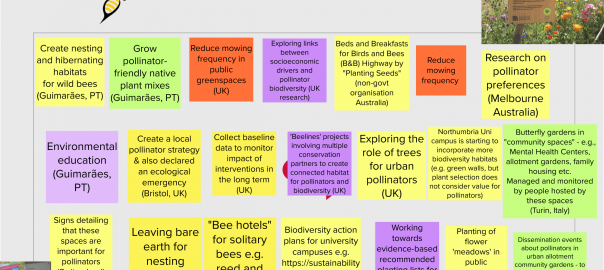

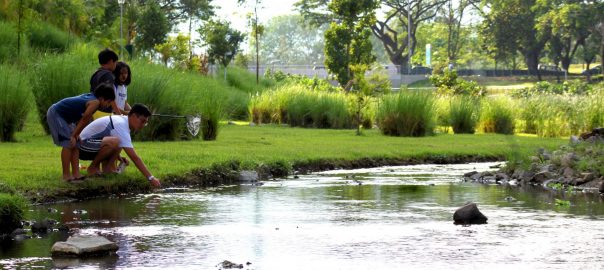
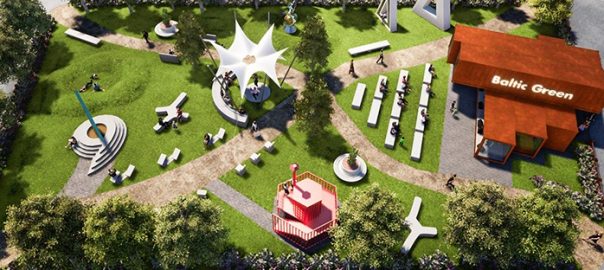
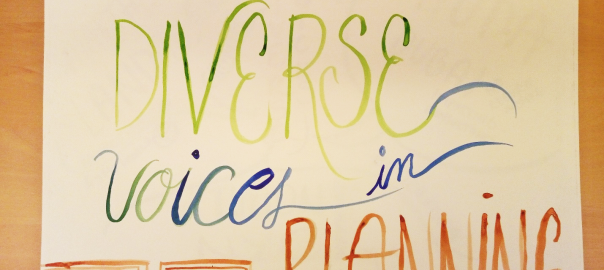
Leave a Reply